“Bones and Wheels” by Daniel Hölzl
|CLAIRE KORON ELAT
Society's fetish for imperishability does not just manifest in our inclination for cosmetic surgeries or detox programs. Even in the technical and industrial realms, the tension between original versus replica has long been a debate. Is a replica — undistinguishable from its original — a way of preserving and conserving objects? Daniel Hölzl merges both forms. The artist has embodied his interest in the original versus replica paradigm through the unconventional medium of airplane landing gear.
CLAIRE KORON ELAT: Your work that we currently have installed at the 032c Workshop on Kantstrasse appears as an ambiguous, colossal chassis. The structure that holds the giant airplane wheels is reminiscent of a ribcage. What does this work aim to touch on?
DANIEL HÖLZL: My work, END-OF-LIFE, cycle four (2022), is supposed to resemble the landing gear of an Airbus A300. It was the first commercial airplane to be predominantly built with carbon fiber, and thereby started a new era of commercial avaition. The wheels I used for the work are original, whereas the landing gear, based on the original blueprint of the plane, is a replication comprised of paper mache and wax. I tried to copy the original as much as possible, but the sculpture itself can be more aptly described as a “replica gone wrong,” as it lost its original function. The fact that it’s constructed from a different material makes it more of a scale model than a real replica. Not to mention, the fourth wheel “fell off“ and is placed somewhere else in the room than the rest of the sculpture. It‘s entirely made of paraffin wax.
I first showed the work in my solo exhibition “GROUNDED” at DITTRICH & SCHLECHTRIEM in Berlin. In that context, the fourth wheel was placed on a heating panel and was installed in the center room, disconnected from the landing gear. Throughout the duration of the exhibition, the wheel melted, and the wax spread throughout the entire room. The melting process alludes to the idea that everything is transient. The paraffin wax comes from a German company that recycles sacral candles, embedding the work in an indirect religious context. It also highlights the many previous lives, such as being used for candles in a church and now in an artwork, of this petroleum product.
Today, an airplane is made up of around 80 percent carbon fiber. The seeming advantage of using carbon fiber is that the less a plane weighs, the less fuel it burns. But industrial carbon fiber is made of petroleum, meaning that using carbon fiber to save petroleum is a fallacy. Grounded carbon fiber planes are also more difficult to recycle than the planes that were formerly used. You consume more petroleum to save petroleum. It’s greenwashing — an illusion.
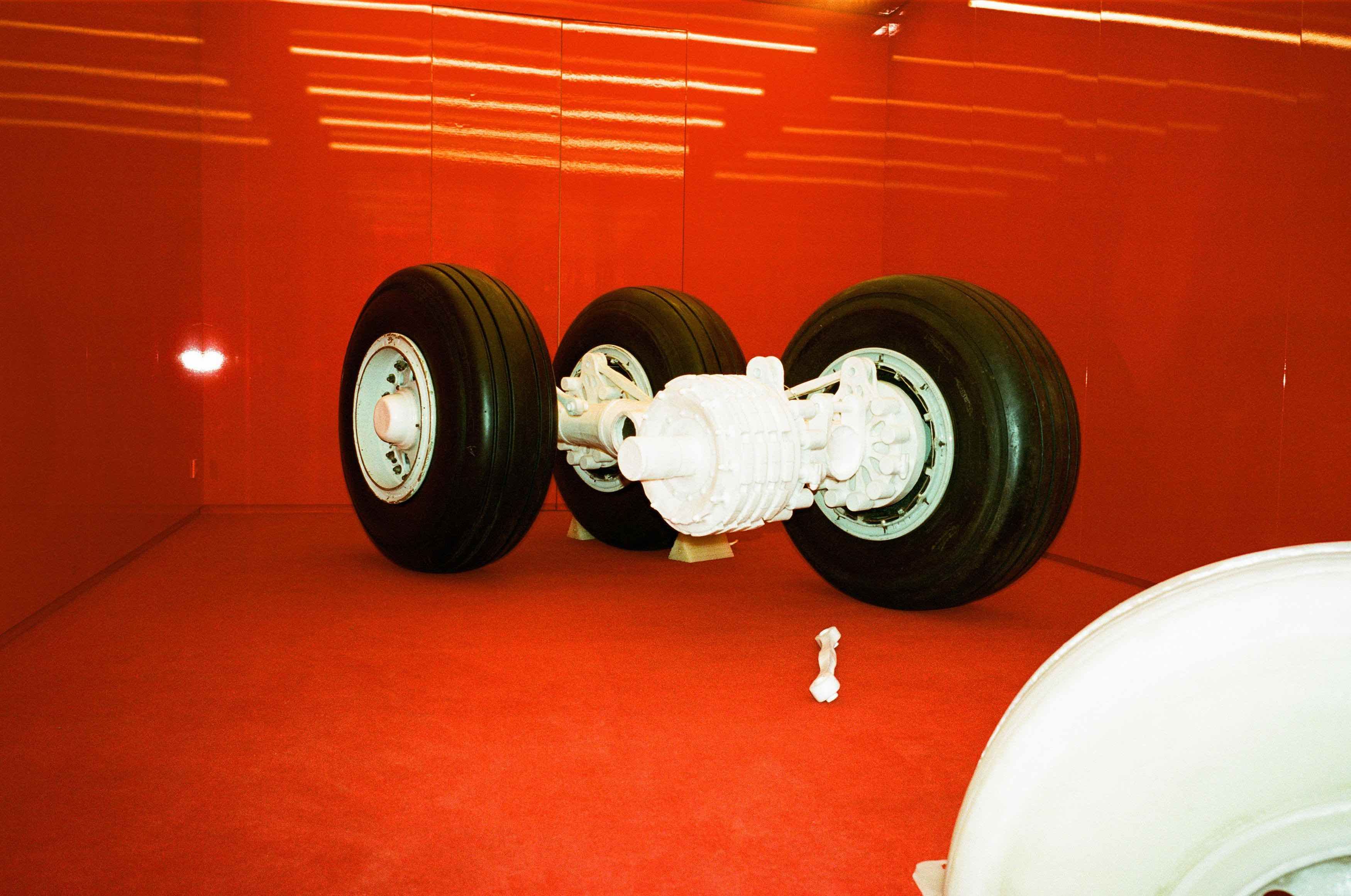
CKE: The combination of original wheels and replicated landing gear, a merging of original and replica in the same work, is interesting to me. The notion of a replica alludes to the idea that humanity strives for preservation and conservation. Even if the original doesn’t exist anymore, there is still the possibility to revive it through reproducing it and manufacturing an X number of copies of the original.
DH: A lot of my work deals with reproducing, copying, and modelling, which is closely tied to the transient materials, such as wax, I’m using. A replica would imply that I’m rebuilding the exact original, meaning that I would also have to use the same material. In AUSHANG (2021), for example, I measured out a room of an apartment in Berlin and sewed the spatial structure out of parachute silk. Then I blew the fabric out of the apartment’s window. It’s a way of displacing the room, similarly to how a replica is a displacement of the original. If you think about notions of preservation and conservation, you can interpret a melting sculpture as a monument for temporality, which questions monuments in general but also our human fetish for permanence.
CKE: Continuously producing replicas feeds society’s fetish for im-perishability. This idea can also be applied to human bodies, touching contemporary obsessions with being and looking young. It’s a way of conserving a very particular state of your life. For example, some people intend to look forever 21.
DH: “Forever” is the most horrific and simultaneously the most beautiful illusion. It evokes the question if the original still stay the original, once it has been fully replaced by spare parts. You can also relate this to the industrial sector, where it’s even more about multiplication and instant replacements. For example, when you design the wings of an Airbus plane, one also has to take into account that they have to be applicable to X number of other Airbus planes. However, if you use such a large amount of carbon fiber, it’s not possible to endlessly produce the wings because we will simply run out of petroleum at some point.
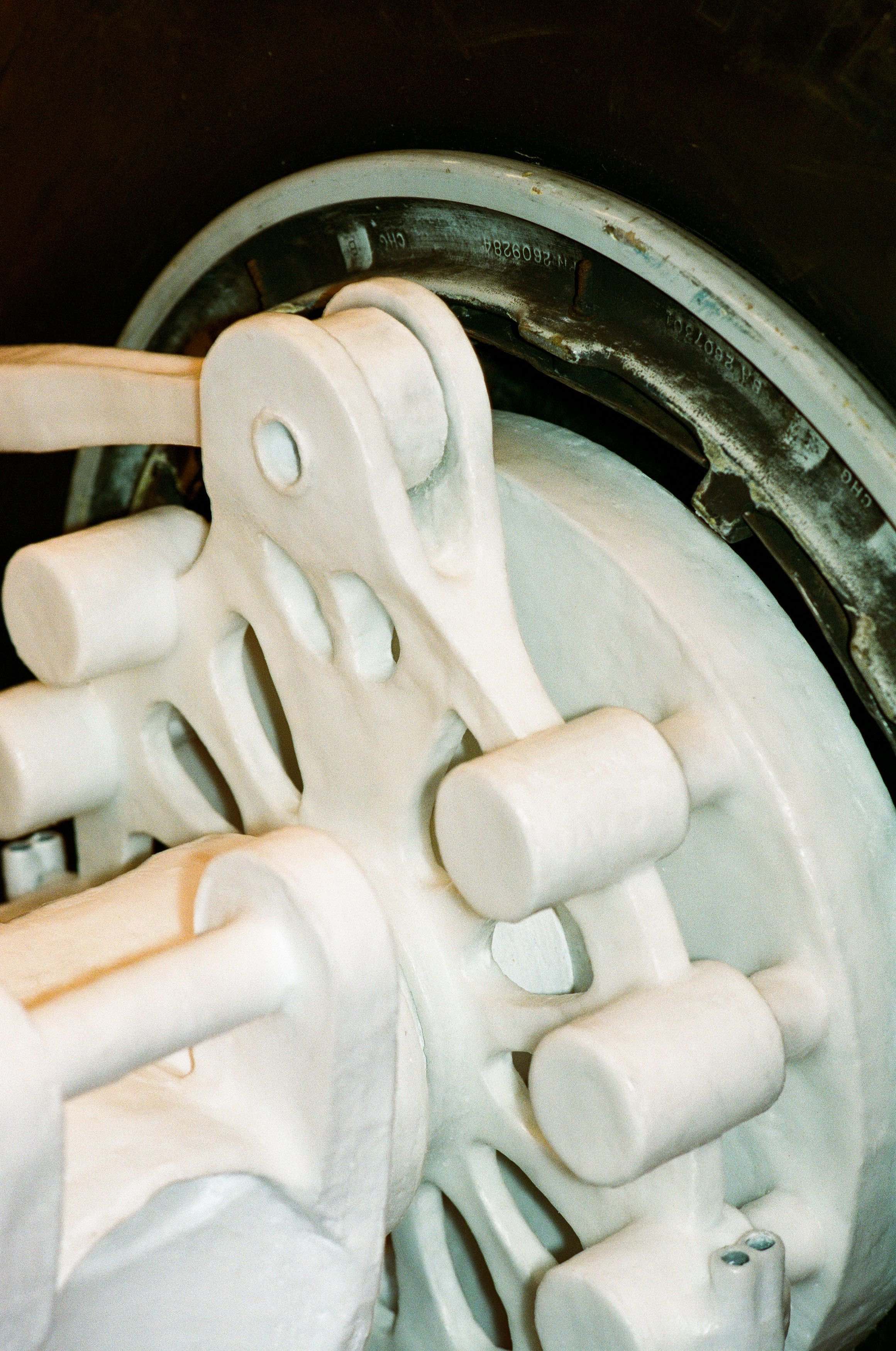
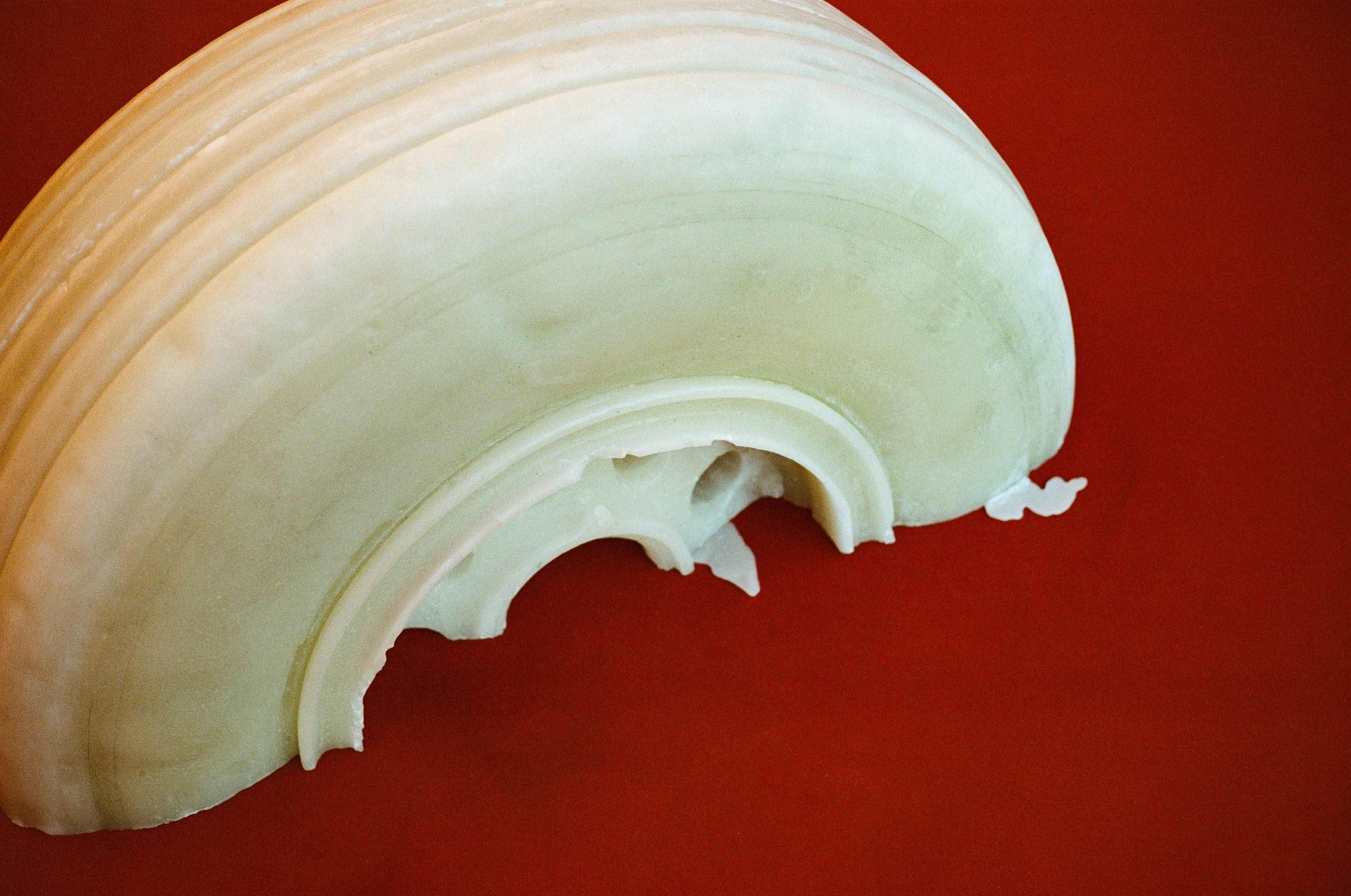
CKE: I think the reproducibility of industrial products can be compared to the development of humans gradually resembling each other more and more. Certain contemporary aesthetics, such as face filters on Instagram, emulate this industrial circle and the misconception that one template — or size, in a fashion context — fits all. These filters make people look the same, just like you repeatedly reproduce the same looking wings or landing gear.
DH: We all want to be unique, but also just copy each other. There is an aspect of aesthetic notions that are learned; the more you see people with face filters on, the more your brain will think that's what’s beautiful. Agreeing on this similar and familiar aesthetic and intending to look the same while also wanting to be so different from everyone else, creates a simultaneous sense of belonging. But in terms of art, it’s supposedly more about being unique. The readymade breaks this idea. In END-OF-LIFE cycle four readymade and original sculpture are merged. I combined a mass product — the original wheels — with a sculptural structure, which is eventually going to melt away.
CKE: If you rebuild objects that are based on a functional aesthetic, would you then also describe the work itself as functionally aesthetic? This touches on the idea you mentioned earlier about people striving for illusions, such as with greenwashing. A replica is also just an illusion of the original.
DH: The landing gear is interesting because, even though it follows a functional aesthetic, it has quite a recognizable and clear formal language. If you remodel this form with your hand, the efficiency that’s based on its form gets lost. In this way, you break the seeming perfection of the original product.
CKE: The aspect of reproducibility might be a mode of production that’s more common in the commercial realm but even in art, there are certain trends — say, abstract figurative painting is currently popular, so artists produce more of that. So, reproducibility must exist there, too.
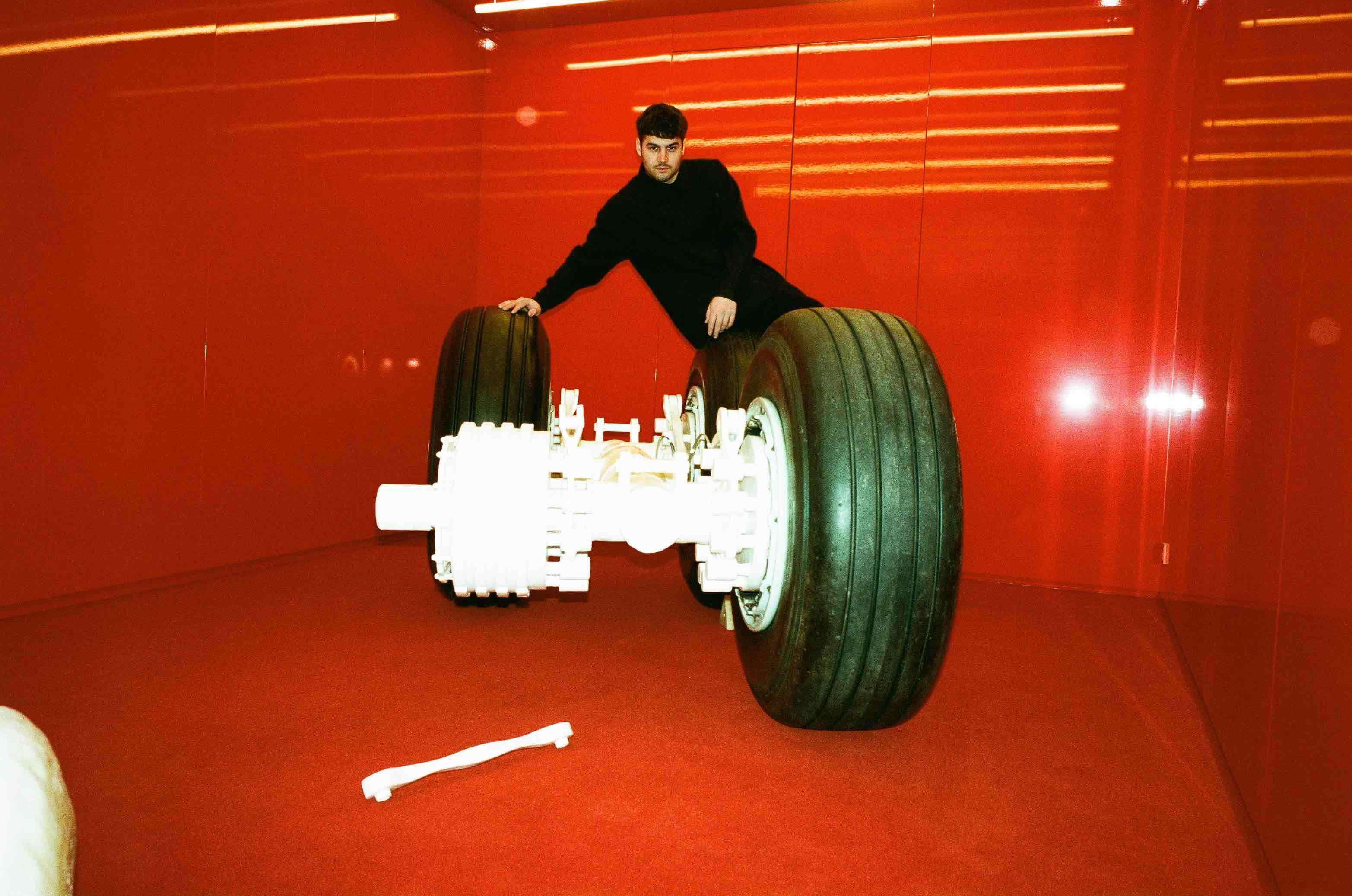
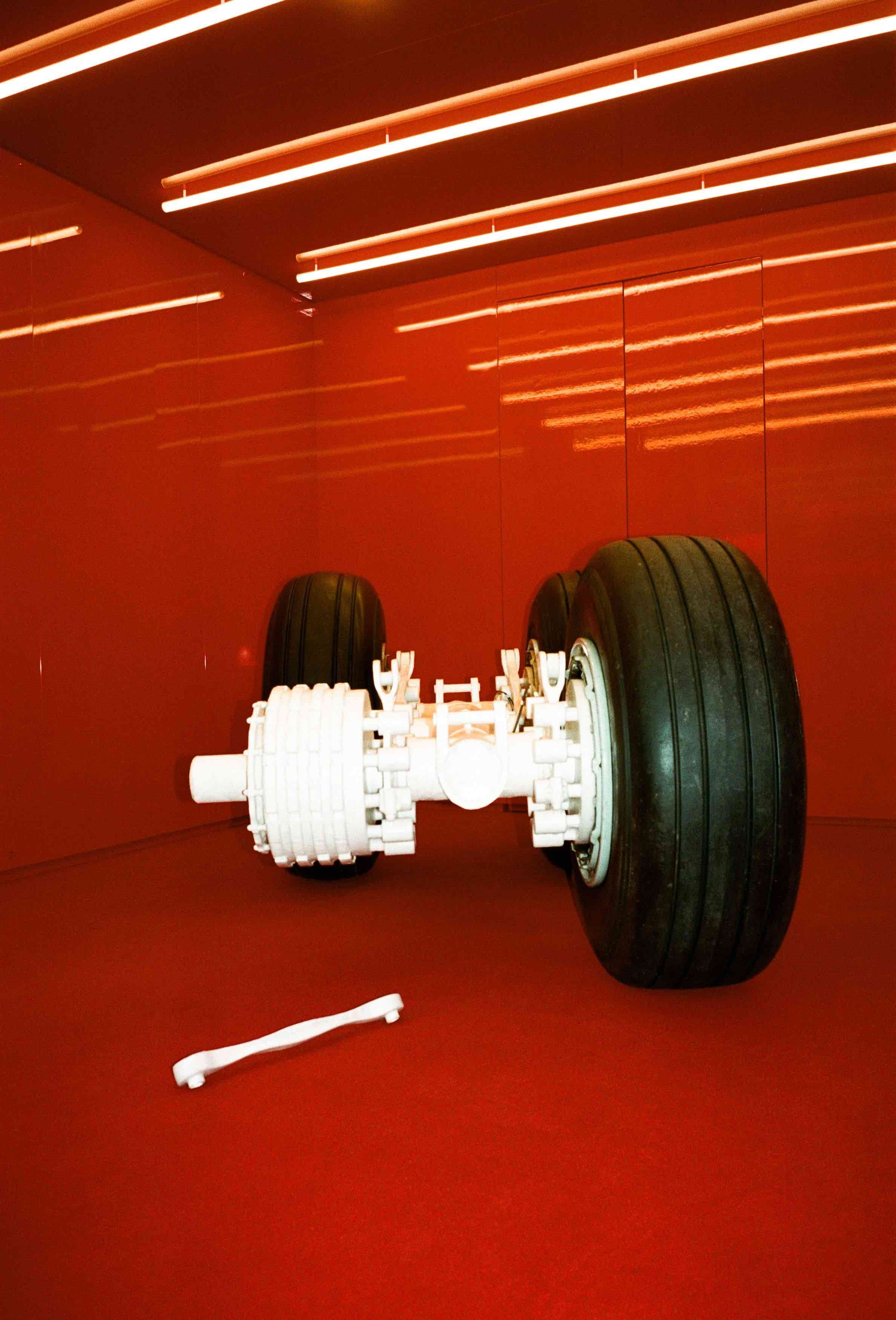
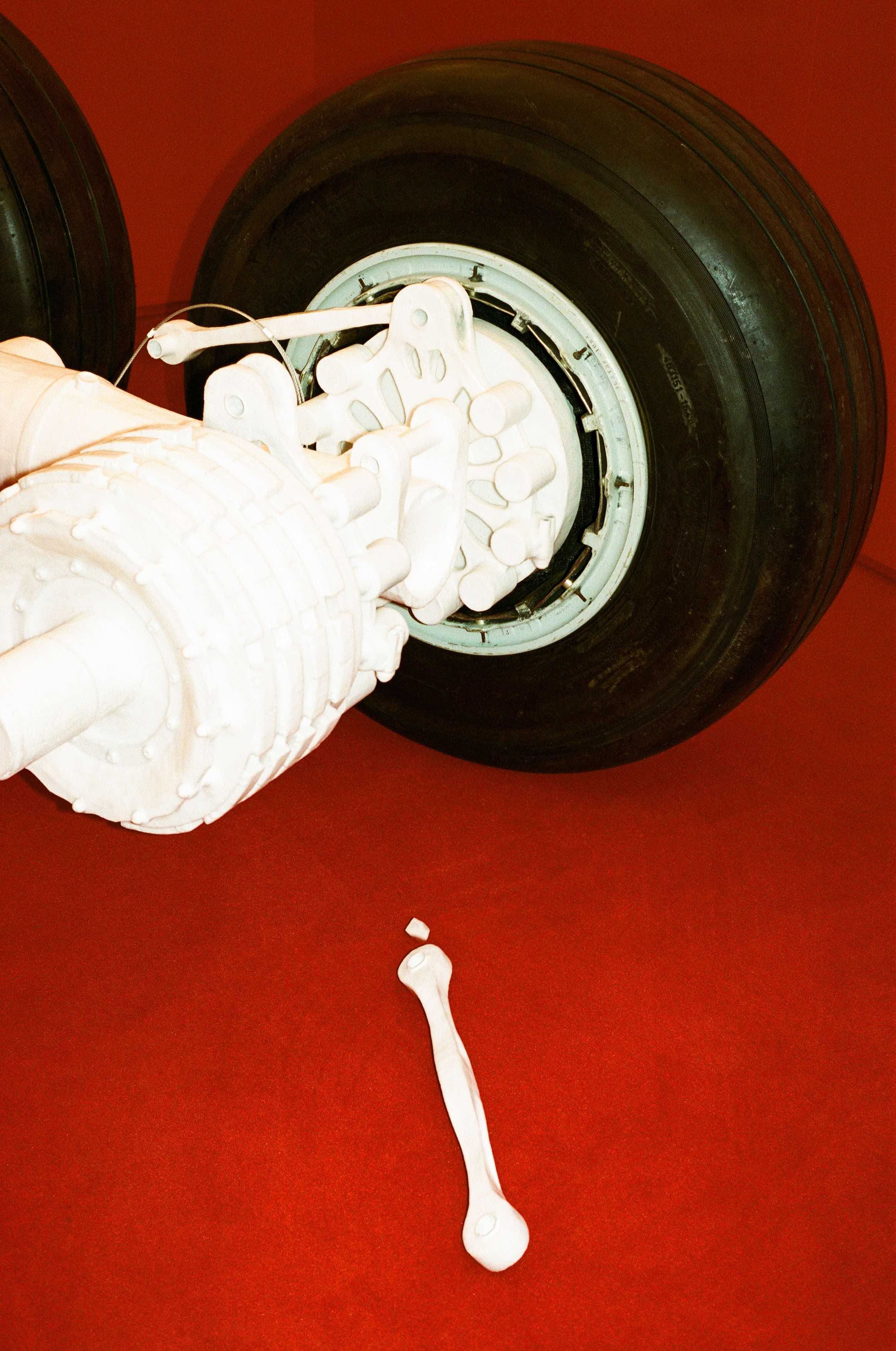
DH: Yes. Editions, for instance, are definitely a positive example. I think they’re a way of sharing art, just like several people can own a “commercial” product. On the other hand, the reception of art is also a way of sharing it. You share the experience, and it’s not about owning anything. At the end of the day, it's a small, selected circle that visits exhibitions regularly and shares these moments.
CKE: The space where your work is currently displayed is unique in its clear separation of art and commerce. You have a store in the back and a non-commercial exhibition space in the front. But even galleries can be described as some form of a store — artworks are sold there as products, just like garments are sold in a clothing store. Since your practice is quite site-specific, how does the different, “unusual,” location influence your work?
DH: Although people often don’t want to say it, artworks are goods. It’s interesting for me to show in the red room because a different audience is exposed to the work than at a gallery. I also think that there are similar dynamics in a store and gallery. At a gallery, you’re not obliged to buy a work, you can also just look at it — it’s the same case for a clothing store. You can go there, simply look at the clothes, and maybe get inspired.
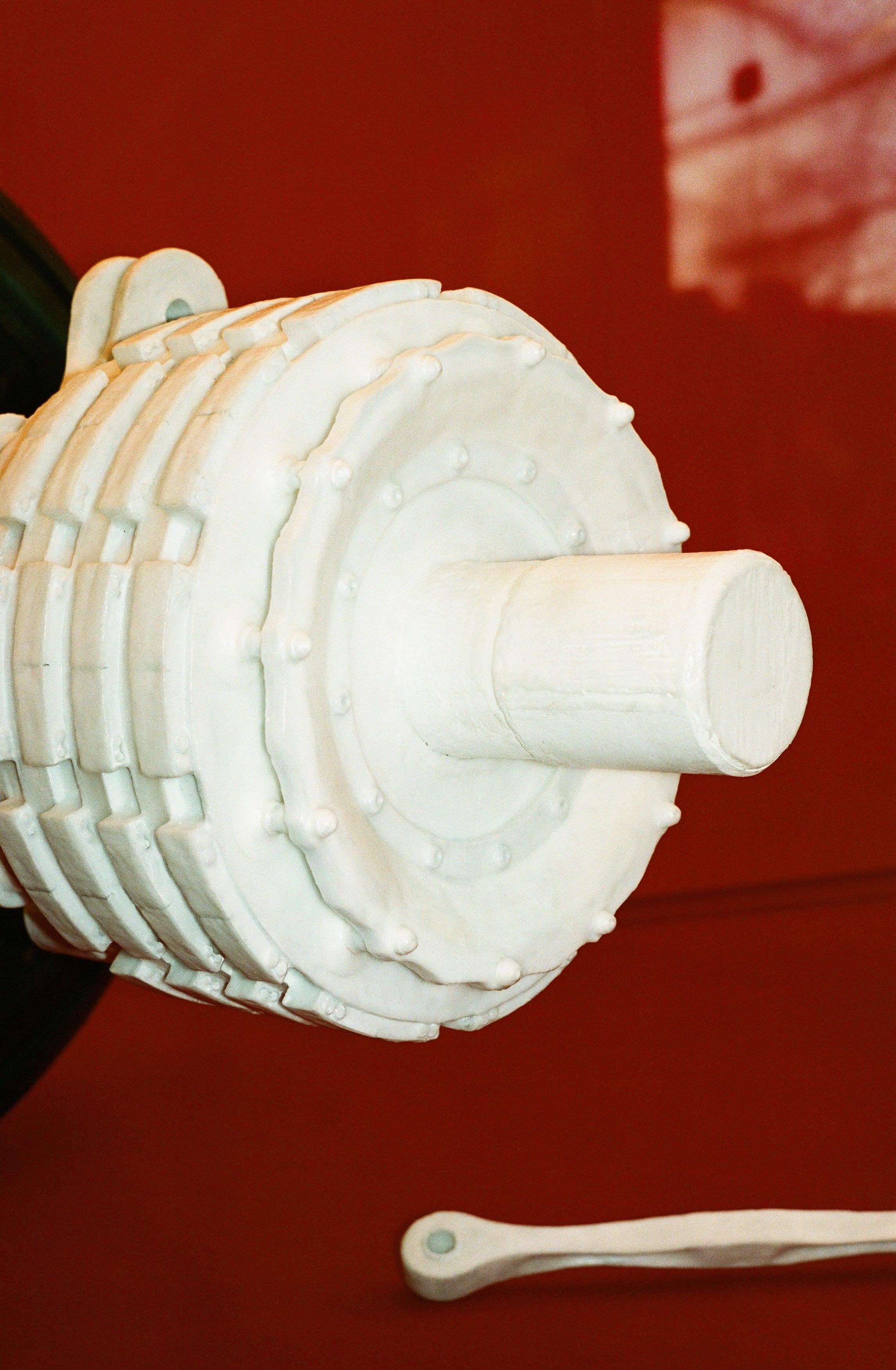
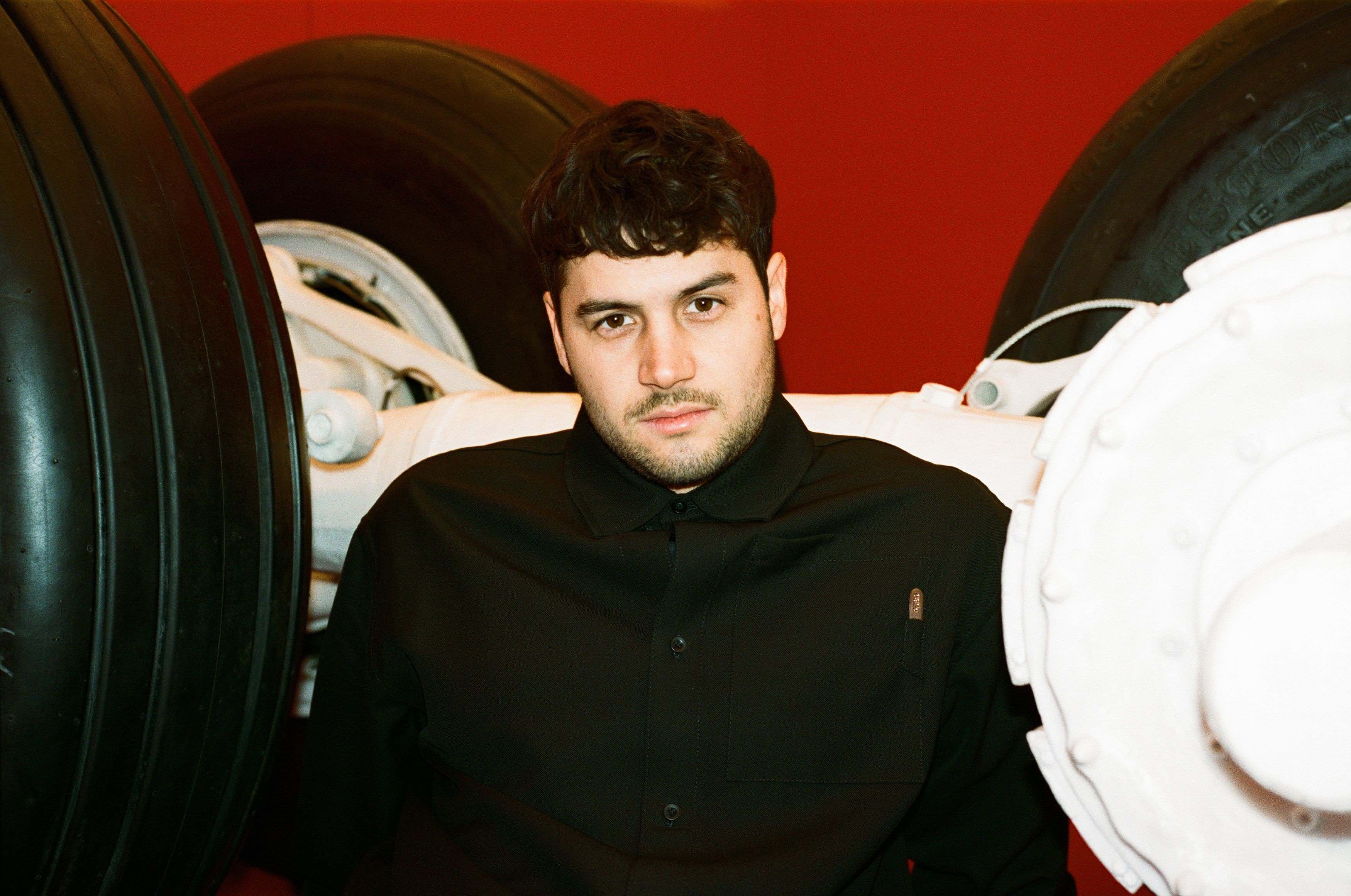
CKE: The room being entirely coated in red is certainly quite specific and probably affects the perception of your work. The work was previously exhibited at DITTRICH & SCHLECHTRIEM’s space, more reminiscent of a white cube.
DH: There is an intense contrast between the red space and the black and white of the work. The color scheme in the exhibition at DITTRICH & SCHLECHTRIEM was more monotonous. In the red room, the pieces seem almost floating, while the one wheel made of wax disappears into the floor. The main question for me is: what will be grounded in the future? Exhibiting a work that deals with petroleum in an entirely red room therefore seems fitting as the climate catastrophe is getting more severe every day.
CKE: The room can be perceived as a subversion of the white cube — maybe even a replica of the white cube, apart from the changed color.
DH: Maybe the choice of such an aggressive color can be interpreted as a statement of futurity.
Credits
- Text: CLAIRE KORON ELAT
- Images: CHRISTIAN WERNER
Related Content
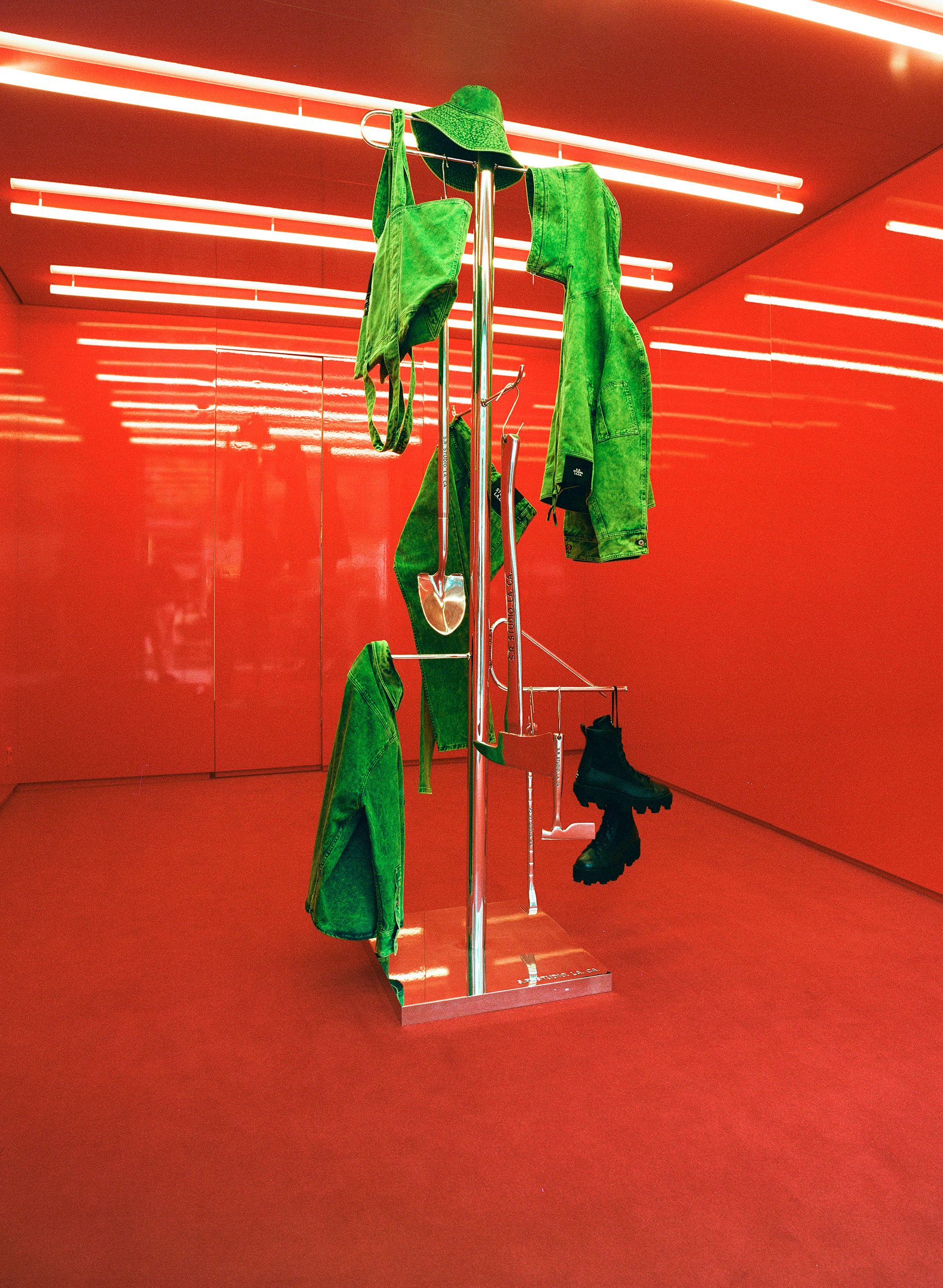
032c WORKSHOP Opens in Berlin-Charlottenburg
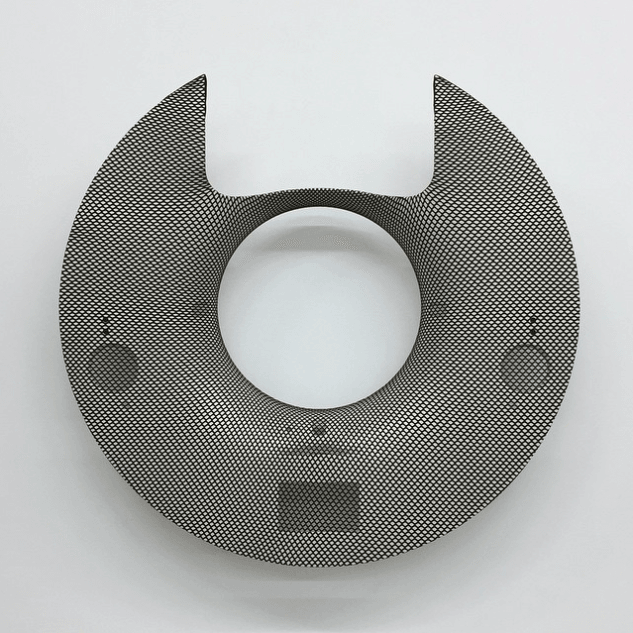
“Engines Turn, or Passengers Swim” by Yngve Helen
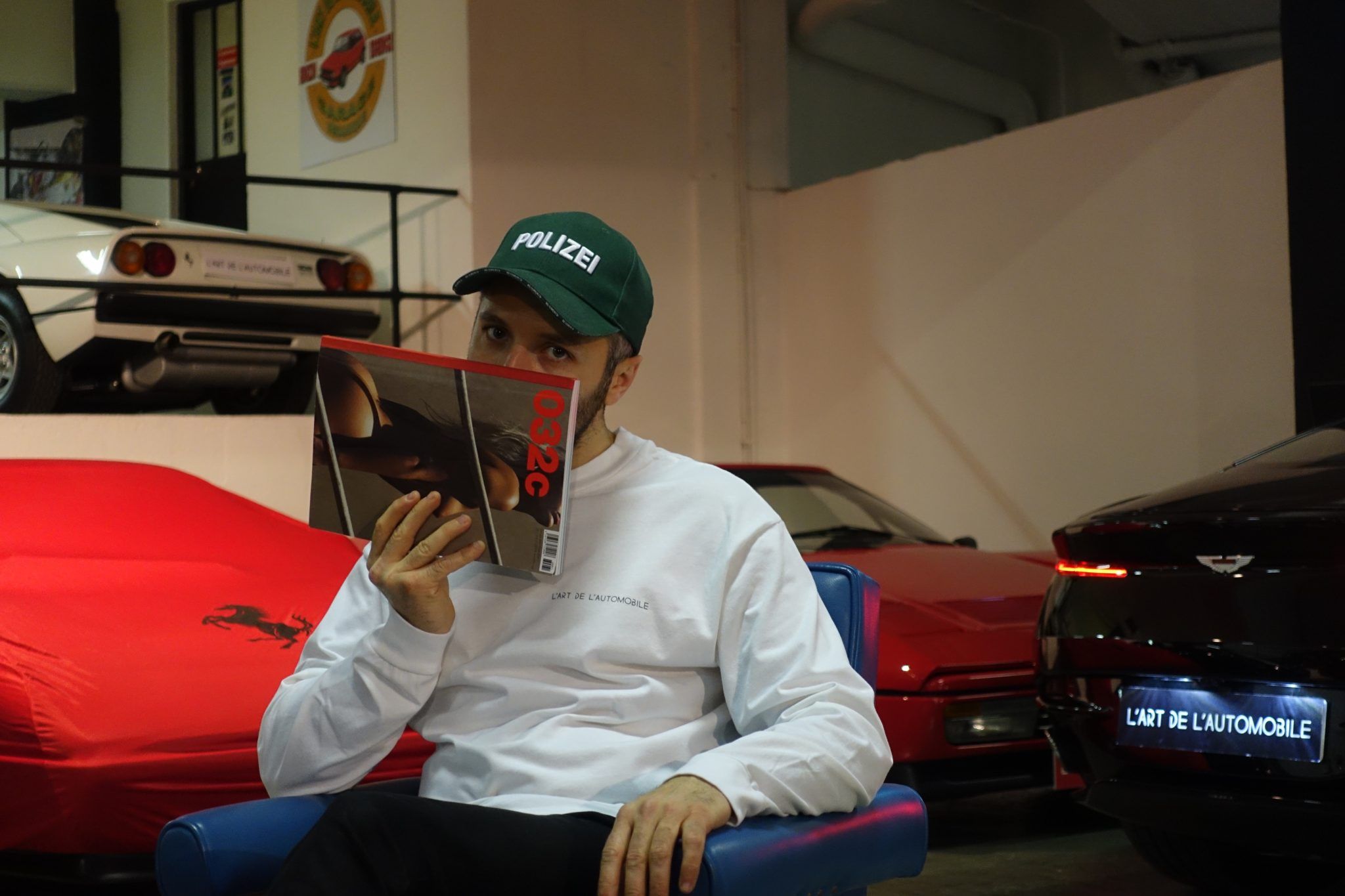
Un Rendez-Vous with Parisian Car Dealer ARTHUR KARAKOUMOUCHIAN
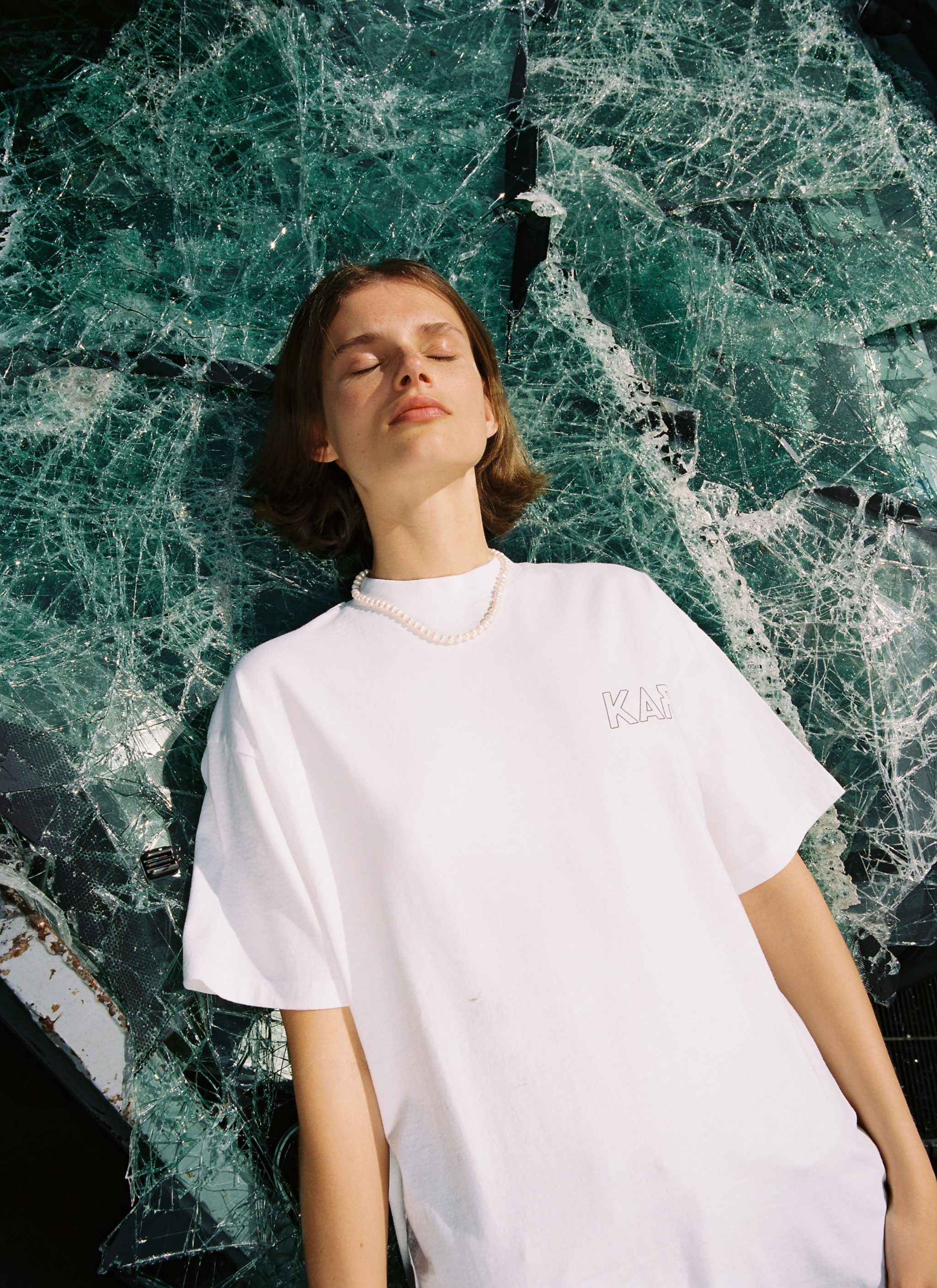
L’ART DE L’AUTOMOBILE and THE BROKEN ARM’s T-Shirt Commemorates Car Burnings in the French Suburbs
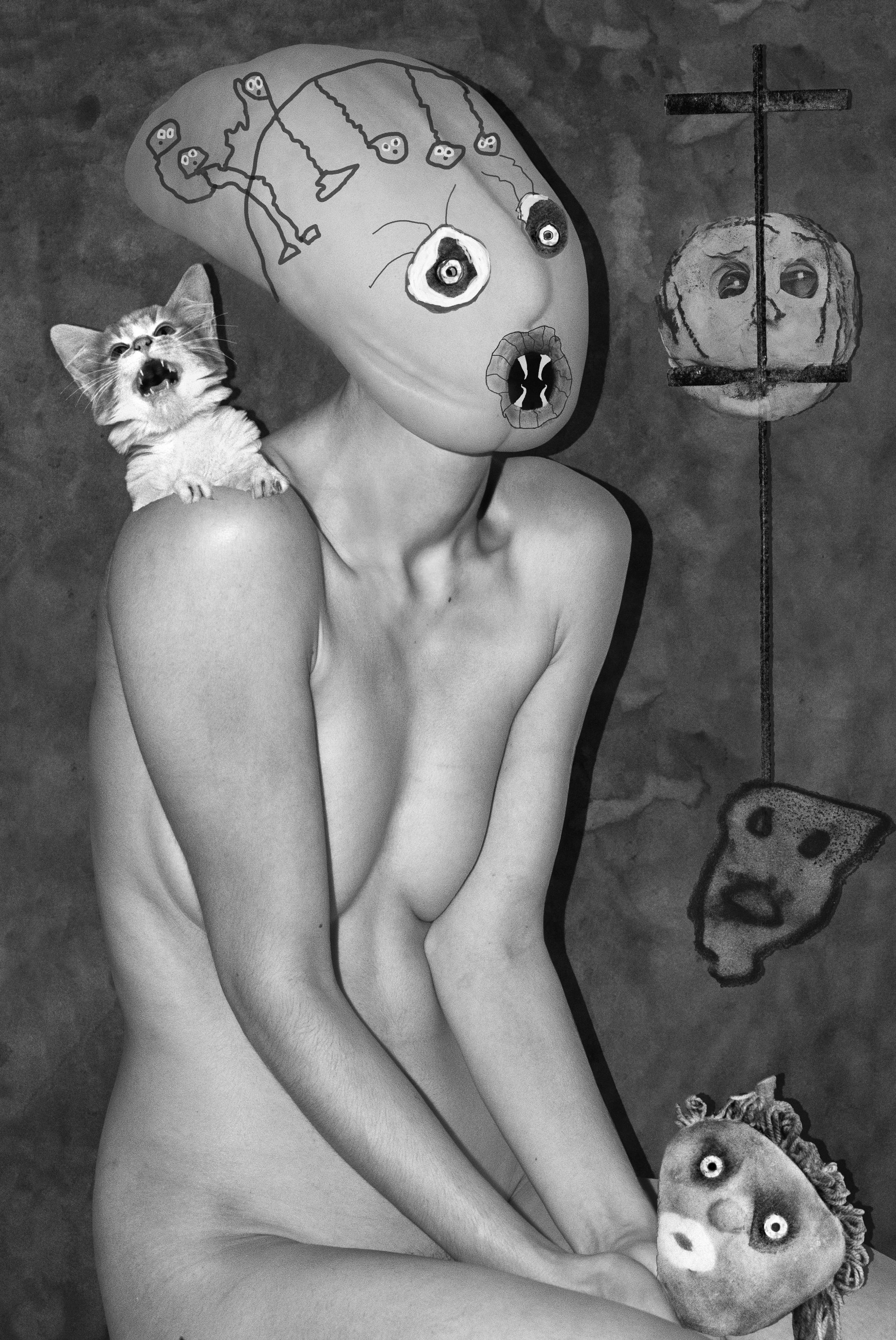
GOOBLE GOBBLE ONE OF US
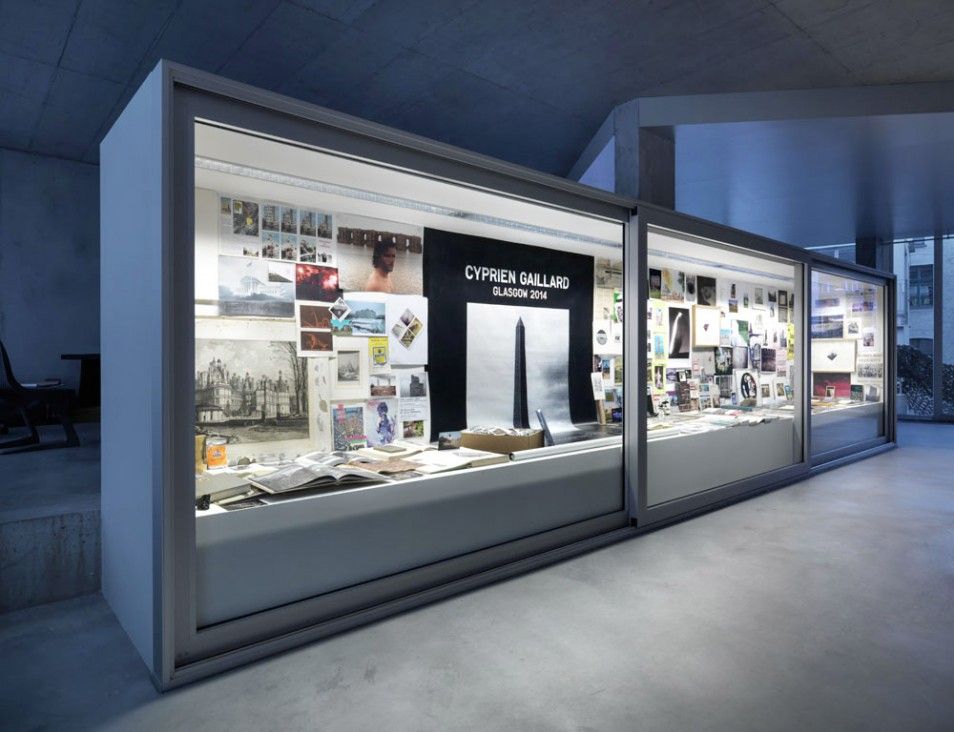
“The Berlin Archive 2009–10” by Cyprien Gaillard
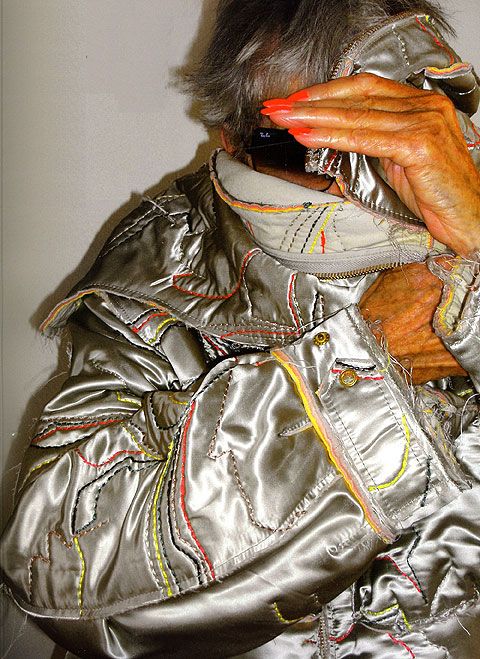
STURTEVANT
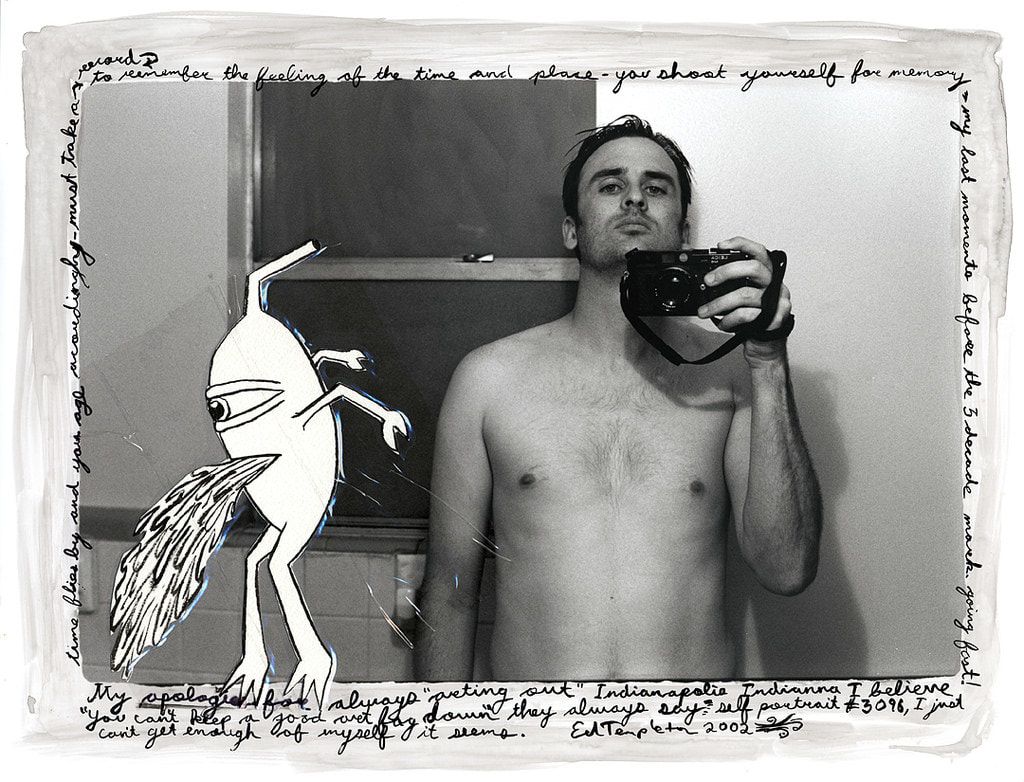
Welcome to Hell: Skater ED TEMPLETON Exhibits Suburbia